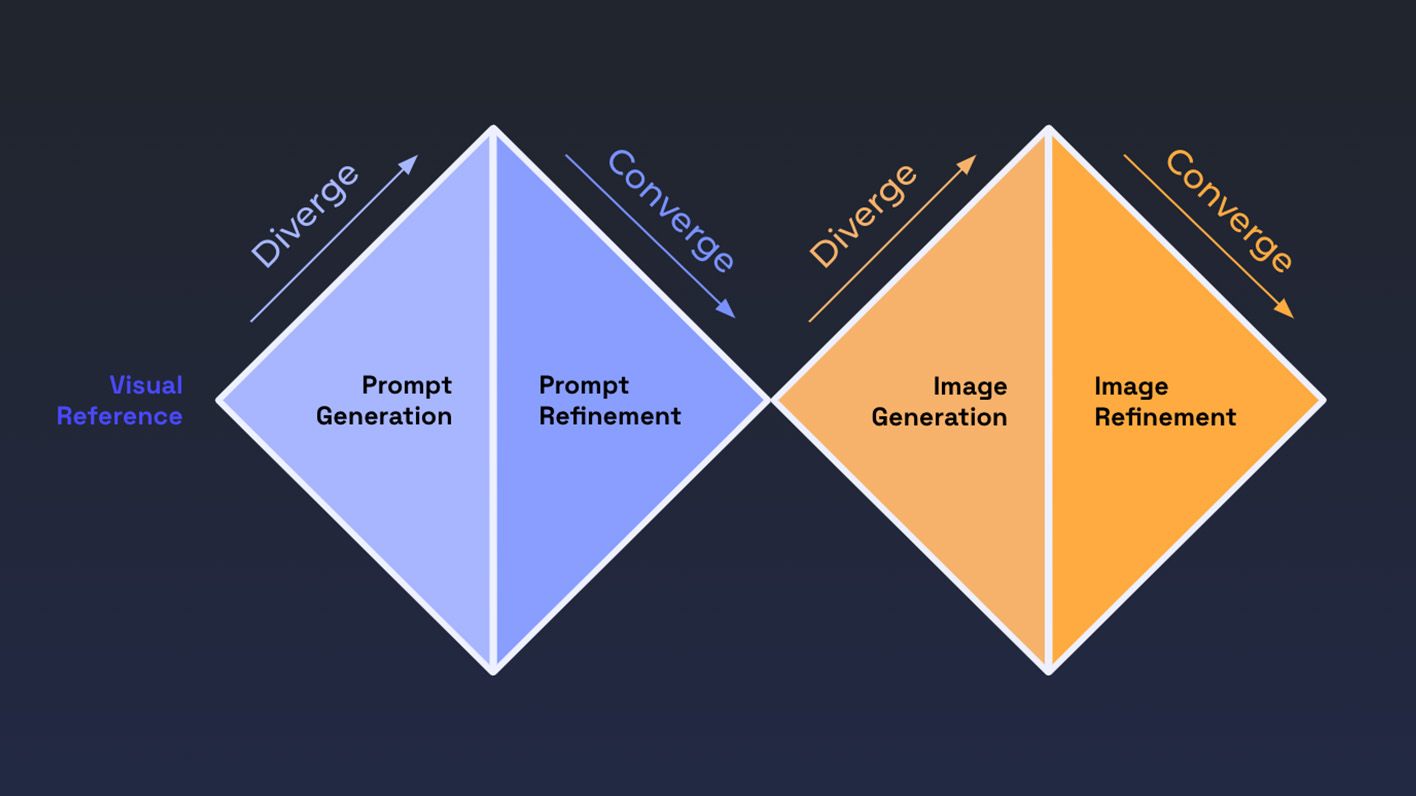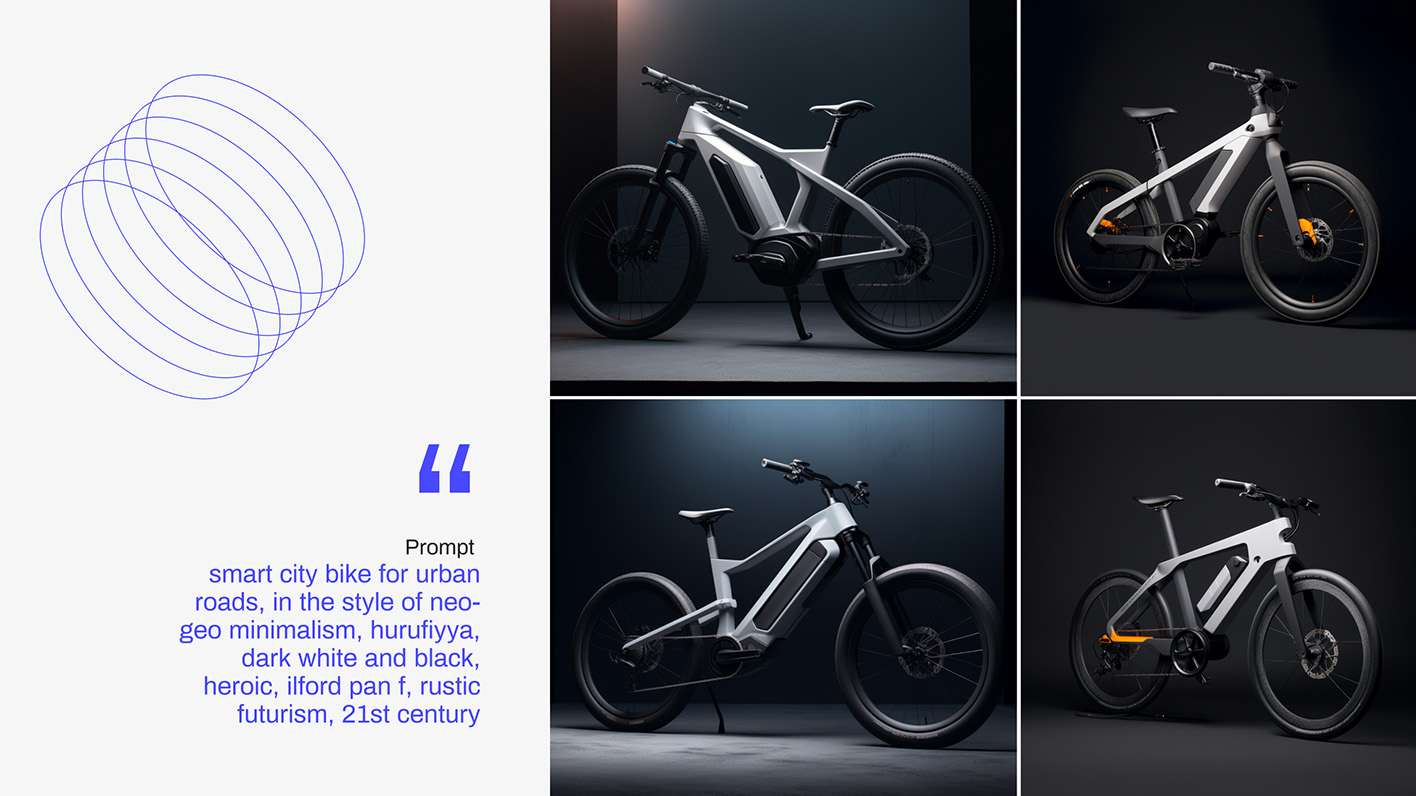
Mar 1, 2024
TOPICS
SHARE
In the ever-evolving landscape of design and innovation, the role of artificial intelligence (AI) tools has become increasingly prominent, marking a significant shift in how creative processes are approached and executed. As the design community continues to grapple with this changing landscape, there's a pressing need to adopt a culture of transparency, structured exploration, and an open-source ethos not only to keep pace with technological advancements but also to ensure that innovation remains both accessible and accountable.
Driven by a culture of continuous learning and growth, the global design community is adopting an open-source approach to technology development, ensuring that innovation remains accessible and responsible. Although the tools available to designers are constantly evolving to keep pace with technological advancements, adherence to a proven design process remains essential. Design outcomes driven by AI, without a solid user-centered approach and clear objectives, often fail to deliver optimal results and may result in unfeasible concepts. The true skill of a designer lies in making informed, early decisions based on the team's collective experience, aiming for solutions that lead the market.
The transition from 2D sketching to computer-aided design (CAD), and from graphic design to desktop publishing, mirrors the current shift towards integrating AI as a generative tool in the creative process. This evolution presents immense opportunities to revolutionize design creation. The use of AI can significantly enhance productivity and broaden creative horizons by streamlining the creation of design concepts, background and stock images, video footage, and UX assets. By automating routine tasks and aiding in creative decision-making, AI allows designers to concentrate more on the creative aspects of their work. Central to harnessing AI's benefits is an objective-driven approach, where the choice of tools and technologies is dictated by specific criteria that align with the project’s objectives and values, ensuring that the adoption of AI in design not only boosts efficiency but also enriches the creative process. AI tools have significantly boosted productivity and expanded creative possibilities for designers. Central to leveraging these benefits is an objective-driven approach. Establishing clear selection criteria is essential for navigating the vast possibilities AI-based design tools offer. This structured approach enables designers to evaluate and compare different options effectively, ensuring that the chosen tools are best suited to their specific needs.
With clear objectives in mind, it's also important to remain open to the unexpected. Embracing serendipity has led to some of the most innovative designs, with "happy accidents" often resulting in more creative and impactful solutions. By building a solid foundation, these surprises can become valuable assets, enhancing the project's goals and offering more innovative or effective solutions. Navigating the uncharted waters of the unexpected in the creative process with an open mind is about letting go of preconceived notions and rigid plans to welcome serendipity, accidents, and the seemingly out-of-place ideas that often lead to groundbreaking innovations. This approach is not merely about being receptive to the unexpected; it's about actively seeking it, and understanding that the most extraordinary ideas often arise from the collision of disparate thoughts and experiences. In the realm of creativity, the unexpected serves as a catalyst, pushing boundaries and challenging the status quo. It encourages creators to experiment, to play with ideas without the fear of failure, understanding that what initially appears as a mistake can, upon closer inspection, reveal a path to something truly novel and impactful. This mindset fosters a culture of continuous learning and growth, where each unexpected turn is seen not as a detour but as an opportunity to explore new horizons. By embracing the unexpected, artists, designers, and innovators open themselves to a broader spectrum of possibilities, making room for discoveries that can transform not only their work but also the world around them.
Embracing serendipity has led to some of the most innovative designs, with "happy accidents" often resulting in more creative and impactful solutions.
The potential for unexpected outcomes is a testament to the dynamic nature of the design process. Recognizing these possibilities requires a high level of design leadership skills, where designers must evaluate whether these serendipitous solutions enhance the project's objectives. This open-minded approach allows for the incorporation of innovative ideas that might not have been considered initially, demonstrating the importance of flexibility and adaptability in the creative process.
Building on a solid foundation, these surprises can become valuable assets. Recognizing the potential for unexpected outcomes requires a high level of design leadership skills. Designers must evaluate whether these solutions enhance the project’s goals, potentially offering a more innovative or effective solution.
Employing both diverging and converging AI methodologies plays a crucial role in generating and refining concepts. Through a synergy of written narratives, image creation, and refinements, design teams can effectively visualize potential solutions and sharpen the visual narrative. The most efficient design teams adopt a holistic approach, merging various processes to yield the best, most streamlined outcomes. This method ensures a comprehensive exploration of ideas, enabling the development of innovative solutions that are both visually compelling and aligned with the project's goals.
For designers looking to enhance their workflow and creativity with AI technology, a range of tools offers transformative capabilities, For best results, we leverage these tools in combination:
ChatGPT: Functions as an AI research companion, aiding in idea exploration, information gathering, and research enhancement. It acts as a prompt writing assistant, always available to explore new ideas and find relevant information. An effective way to format prompts for Midjourney.
Midjourney: Specializes in image generation with a focus on how imagery is created for products and presentations. Focus on prompt crafting to enable the production of visuals for concepts and supporting images.
Krea.AI: This is a creative AI platform designed to empower designers and content creators by automating and enhancing the creative process. It utilizes AI to offer tools for design, content generation, and idea development, streamlining tasks such as creating graphics, and generating content ideas by simplifying the creative workflow, making it easier for users to bring their ideas to life with efficiency and a touch of AI-driven innovation.

In embracing AI design tools to push the boundaries of design and innovation, designers are encouraged to adopt a curator’s mindset, prioritizing critical thinking and focusing more on the ‘why’ behind their choices than the ‘how’ of execution.

Prioritizing the 'why' fosters a deeper engagement with the design process, prompting designers to delve into the essence of their creations. It transforms them into storytellers who curate solutions that best fit the project's vision and the needs of its audience. This curated approach not only pushes the boundaries of what's possible but also ensures that the outcomes are meaningful, user-centered, and reflective of a well-thought-out strategy. By focusing on the significance behind their choices, designers can create more impactful, relevant, and forward-thinking solutions that stand the test of time.

In embracing AI design tools to push the boundaries of design and innovation, designers are encouraged to adopt a curator’s mindset, prioritizing critical thinking and focusing more on the ‘why’ behind their choices than the ‘how’ of execution.
The adoption of AI design tools in the design process represents a significant opportunity for designers to expand their creative frontiers and innovate in ways that were previously unimaginable. However, leveraging these technologies to their full potential requires a structured, open approach that prioritizes transparency, critical thinking, and a commitment to ongoing learning and growth. By adopting a curator’s mindset and embracing the unexpected, designers can navigate the vast possibilities offered by AI, ensuring that their work not only leverages the latest technologies but also contributes to a culture of innovation that is accessible, accountable, and aligned with the broader goals and values of the design community. The adoption of AI technologies should not be viewed as a "race to the bottom" to exploit potential efficiency improvements and time-saving measures to shorten the design process. Instead, it presents an opportunity to adopt a more user-centered approach. This approach shifts the focus from how to design to why design is necessary, streamlining the tactical aspects of the design process. It allows the design profession to concentrate on the more strategic aspects, giving teams additional time to address critical questions around product-market fit and user needs. This perspective ensures that AI serves as a tool to enhance the quality and relevance of design work, rather than merely speeding up existing processes.
About the Authors:
Gregor Mittersinker is a seasoned design leader with 30 years of experience, specializing in regulated industries and the innovative application of generative AI. As a visionary thinker, Gregor is deeply committed to navigating the ethical challenges posed by AI, aiming to integrate this rapidly evolving technology into a design-first toolkit. By prioritizing design methodologies, he effectively leverages new tools without compromising quality. His career is marked by a dedication to creating agnostic, comprehensive digital and physical ecosystems, all rooted in human-centered design principles. His work reflects a profound understanding of how to harness the power of AI, ensuring that technology enhances, rather than detracts from, the human experience. Gregor's work has earned numerous accolades, including the Fast Company Innovation by Design Award, IDSA IDEA awards, Good Design awards, Red Dot Design awards, and Core 77 Design awards. Additionally, he serves as an adjunct professor of user experience and service design at RISD.
Saloni Bedi is an industrial designer with a deep passion for pioneering new methodologies and dissecting complex problems to craft impactful products and solutions. Her exploration of various generative AI tools has revolutionized her design process, enabling her to efficiently realize products that remain faithful to the original design intent and vision. Saloni's goal is to seamlessly integrate these AI tools into product development workflows, utilizing her strengths at key points in the design process to enhance the journey from concept to reality. Currently serving as an industrial designer at Loft and as the Chapter Chair for IDSA Boston, Saloni's academic foundation was laid at MIT’s Integrated Design and Management program. There, she engaged in diverse projects, from enhancing accessibility in space through zero-gravity research to designing inclusive pregnancy tests for individuals with vision impairments and developing prosthetic knees for under-resourced settings. Her innovative work has garnered recognition from prestigious awards such as the iF awards, James Dyson Award, Prototypes for Humanity, and C-IDEA, underscoring her contribution to the field and her commitment to making a meaningful impact through design.
Mar 1, 2024
TOPICS
SHARE

Sign up for our newsletter to stay in the loop on all of the cool things we’re doing!
.png)
AI
Innovation